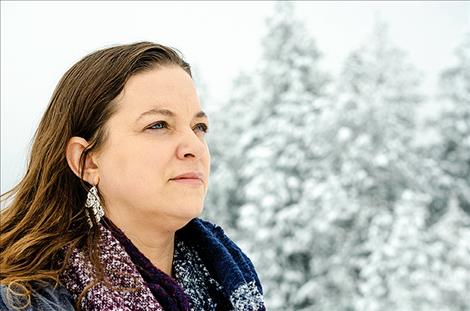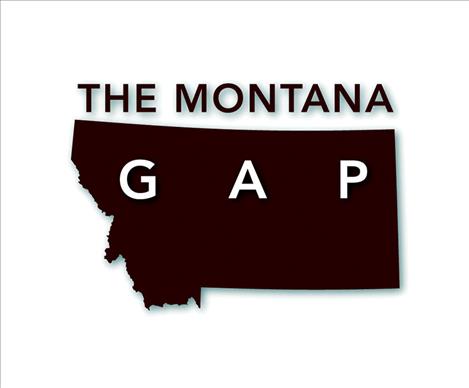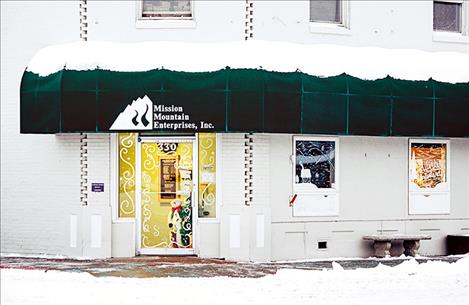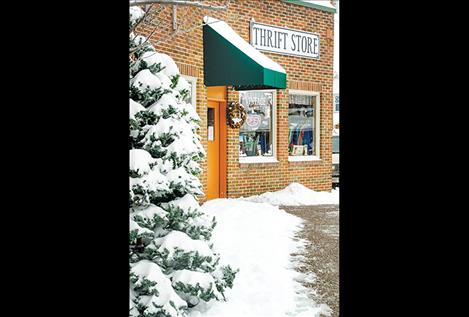Social services help people survive the income gap
Hey savvy news reader! Thanks for choosing local.
You are now reading
1 of 3 free articles.
Caroline Roesch is a single mother with three children living near the Mission Mountain Range in Lake County, and for her, social service programs were there to help keep food on the table when she needed the assistance.
Roesch was a teacher in Utah’s public school system for about a decade when health issues caused her to move closer to family in Montana.
“It was my dream to be a teacher and I couldn’t do it,” she said.
Her father helped her get a used mobile home, and she signed up for several social service programs. Something is always going wrong though, like her car breaking down and the water pipes freezing up under her home.
She deals with the stigma that comes with asking for help.
“I feel a lot of guilt and shame because I wasn’t strong enough to continue living my dream career, and it feels really depressing when I think about it, but I have to tell myself that I paid into the system when I was working, and it’s there for (the) many people who need it,” she said.
Lake County, with a population of 28,758, has a poverty rate of around 21 percent, which is one of the higher poverty rates in the state. The national poverty rate is at 13 percent. A family of four needs to make $30,750 to rise above the poverty line.
Lake County also has a historically low per-capita income average of around $22,000. Per-capita income is the amount of income earned divided by the number of people living in a home.
What is the solution to poverty in rural towns where higher paying jobs are often scarce, transportation can be a challenge, and affordable housing is limited? Social service programs are often the answer.
Federal, state and local programs provide a safety net to help people survive. Their focus is on food, housing, transportation, and education.
The Institute for Research on Poverty looked at the effectiveness of anti-poverty programs in the United States and found that they do have an impact on reducing poverty and keeping people from falling into “deep poverty” rates. The institute reports that the elderly and the disabled receive the greatest benefit from programs. Single-parent families also see a reduction in poverty due to the programs.
The National Advisory Committee On Rural Health and Human Services analyzed the intersection of federal human service programs and rural poverty. The number of high poverty counties in the United States (those experiencing rates greater than 20 percent) has grown in the last decade.
The National Advisory Committee explored what practices might help people gain access to services and support people in poverty. They concluded that rural communities need “anchor” organizations to create a unified safety net for programs utilized by people with low incomes. Roesch hopes this will one day happen in her community.
The National Advisory Committee states that social services for people (the elderly, children, and at-risk families) in rural areas across the country are often made up of a patchwork of programs and funding streams with a mix of federal, state and local services often combined with philanthropic and faith-based programs. Creating one central office for people to locate all of the programs would be helpful for people in need.
County health departments often act as the central location for many services, but people still need to find and apply for additional services with different agencies. The idea is to put them all together, and when people qualify with one program, that information transfers to another program.
Roesch isn’t sure how she would survive without the help of social service programs, but if she could fix anything, she would make it simpler for people to fill out the paperwork to receive benefits, and she would make it easier for people to find the different programs they need.
Echoing researchers’ findings, Roesch said, “Just finding out where the food pantries were located and when they are open was difficult.”
George Haynes, an economist with the Montana State University Extension Office, says poverty is a difficult problem to fix. According to Haynes, the “fix” requires a multidimensional approach with access to resources many rural towns lack, including higher-paying jobs, access to transportation and housing infrastructure.
He said the most obvious way to bring people out of poverty is to increase their capital. He noted that the idea of a living wage is the newest solution being talked about across the country. Depending on where people are living, the plan works by giving people a living wage of around $15 an hour. This wage helps them afford the high cost of living.
“There is an experiment going on in Seattle as to whether that would work or not, but the jury is still out,” he said.
Haynes said the problem with increasing the minimum wage by a substantial amount, around $7, is that many small businesses wouldn’t be able to survive that kind of wage increase.
“It’s important to have jobs that pay well, but it’s not an easy solution,” he said. “Wages are critical but you have to be careful that by helping one person you don’t end up harming others.”
As an economist, he has seen many programs come and go and he is sure about one thing: “We need long-term permanent solutions that are sustainable.”
One organization based out of Ronan is part of a multidimensional approach focused on helping people with disabilities survive on low incomes and avoid deep poverty. Mission Mountain Enterprises was created in Lake County more than four decades ago to serve people with intellectual and cognitive impairments by providing needed services such as jobs at one of their two thrift shops and/or housing assistance. The program relies almost completely on state funding. There are several similar programs set up across the state.
Whitney Cantlon is MME’s chief executive officer and she says the program helps people, but several challenges still exist. She said lack of transportation and other issues in rural Lake County make it difficult for people with disabilities to get to work, travel for medical services, and get to other programs. Government programs also limit the amount of money people with disabilities can make.
“For people capable of working, they can only work so much or they could lose their social security benefits,” Cantlon said. “And it’s hard to replace that income.”
The Montana Department of Public Health and Human Services is trying to make it easier for people with disabilities that began before the age of 26, to save for the future without impacting their ability to apply for assistance. The program allows people to have a savings account called Achieving a Better Life Experience (ABLE).
“This opens up a whole new world for people,” said DPHHS Director Sheila Hogan. “In the past, folks with disabilities were essentially penalized for saving money and being financially responsible. This (ABLE program) will positively change the lives of thousands of Montanans.”
It was noted that giving people with disabilities the power to save their own money or use contributions from others could help people find appropriate transportation options and utilize savings for education or training.
Cantlon said affordable housing is another issue for many of the people receiving services through her organization. Lake County Housing Assistance provides low-income housing to qualifying people, but there is a long waiting list, she said.
“There is a huge need for affordable housing, not just in Lake County,” she said. “We do have services to help people, but they need more funding.”
In a perfect world, she said there would be enough funding to help provide services for people who need it. Unfortunately, the state’s current budget cuts have trickled down to social services and people still need help.
Cantlon said the county is facing problems that affect everyone including a lack of transportation services, lack of affordable housing, limited higher paying jobs, and smaller budgets for social services. But, she added, there is a bright side.
“The beauty of living in a rural area is that people come together and support other people,” she said. “People get together and have fundraisers and they volunteer. It’s amazing to see what people will do for others.”



















